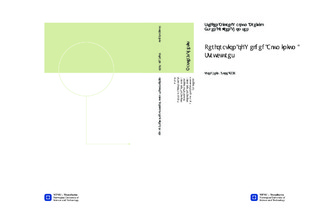Perforation of Welded Aluminium Structures
Master thesis
Permanent lenke
http://hdl.handle.net/11250/233116Utgivelsesdato
2014Metadata
Vis full innførselSamlinger
Sammendrag
The ballistic properties of three welded plates have been investigated, with special emphasis on the weld and heat affected zone (HAZ). The material is aluminium alloy EN AW-6082 T6 and the plates are 10, 20 and 30 mm thick. Physical experiments have been compared with numerical simulations. Material input for the numerical simulations have either been taken from direct calibration and inverse modelling of tensile tests, or from NaMo results provided by Dr. Ole Runar Myhr at Hydro Aluminium. NaMo, a software developed by Dr. Myhr, uses material composition and temperature history as input, and gives material parameters for any point in the material as output. The material models from tensile tests have also been combined with hardness measurements in order to estimate material parameters for selected points across the HAZ.Preliminary hardness measurements were taken to determine the weakest point of the HAZ, and these results were used to determine target positions for ballistic testing. A limited amount of ballistic experiments with 7.62 mm APM2 projectiles were performed. The exit velocity of the projectiles was higher in the HAZ for all three plates. In addition, the experiments targeting the weld itself revealed that this was somewhat stronger than the HAZ. Too few tests were performed in order to make a substantiated conclusion, however, trends were observed.The numerical ballistic simulations have been performed using the finite element code IMPETUS Afea Solver. Simulations overall gave non-conservative results, meaning that they overestimate the resistance of the plates. An initial model was calibrated with tensile tests from the base material of the 10 mm plate, and therefore these results are closest to the values given by ballistic experiments. The complete numerical model gave the best results for the HAZ. Tensile tests combined with hardness measurements overestimated the strength of the HAZ, i.e. the results were non-conservative.The Cylindrical Cavity Expansion Theory has been applied. With material parameters and geometry as input, it calculates the energy needed for perforation. Different material models have been tested, and generally the results are also with CCET, non-conservative. Thicker plates make the method less conservative.Relatively accurate results were obtained using the two pure numerical methods described.
